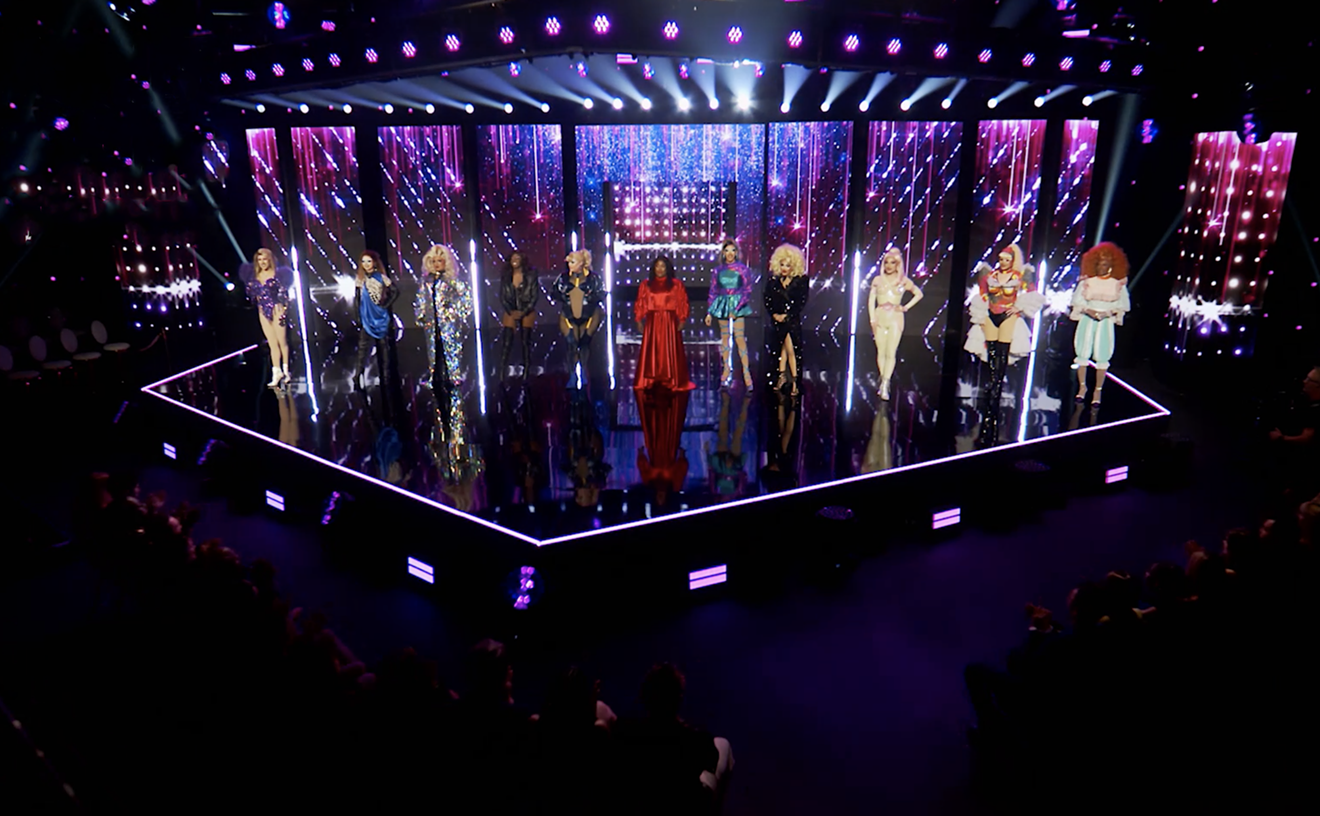Tonight marks the grand opening of the Coral Gables Museum's new exhibition, "Concrete Paradise: The Miami Marine Stadium," which takes viewers through the history of the stadium, from its inception to the prospective renderings of its future renovations. The exhibition seamlessly interweaves the what curator Rosa Lowinger described as "the first third of the stadium's life," leaving you with an invigorated sense of hope and excitement for what will come in the next two-thirds of its history.
There's a good deal to be learned from this exhibit. For instance, the stadium isn't technically called Miami Marine Stadium - officially, it was dedicated as the Commodore Ralph Middleton Munroe Stadium, named after the dedicated public benefactor who, among other notable accomplishments, founded the Biscayne Bay Yacht Club and deeded the land over for the construction of the stadium. For the next three months, the Coral Gables Museum will effectively be removing Miami Marine Stadium from strictly existing as the dank shell of its former self and giving the public an opportunity to see it in all its seasons.
See also: Miami Marine Stadium: A Revival of Magic, Concrete, and Spray Paint
Tonight's grand opening will feature some additional spectacles, like live parkour outside and attractive light installations, but the heart of the exhibition is in the content that will be on display for the next few months, including Hilario Candela's original hand-drawn sketches of the stadium; a colorfully illustrated Argentine movie poster for the Elvis Presley film, Clambake, which used Miami Marine Stadium as its backdrop; and arresting renderings of what the stadium will look like after it's reborn and reopened.
"The story is the story of a building that has been completely influential in Miami," said Rosa Lowinger, curator of the "Concrete Paradise" exhibition, "from the time it was built until today. It influences culture in this city and it's influenced by culture in this city."
According to Lowinger, the museum has been successful in amassing a respectable collection of original documents and relics, in large part by combing through eBay listings. They were also contacted by many members of the Friends of Miami Marine Stadium, who apparently reached out in droves once their newsletter got the word out about the upcoming exhibition.
See also: Gloria Estefan on Miami Marine Stadium's Future: "I Envision a Drive-In Movie Theater for Boats"
"We also found a lot of artists because one of the things we wanted to show was how the stadium has influenced so much of the art scene in Miami," explained Lowinger. "Some of the artwork is documentation of graffiti and some of the works are by mainstream artists, both from Miami and outside Miami, that see the stadium as a vast source of inspiration."
Among these works area number of bold photographs, both in full color and black & white, which vibrantly depict the stadium's modern day visage, resplendent in amazing works of graffiti and rotting in its own disrepair. The exhibition also showcases Nereida Garcia Ferraz's sculpture series, Bacuranao, which is composed of the fragmented remnants of numerous seats from the stadium.
At the far end of Concrete Paradise, a projected video which spans the entirety of the stadium's history - from its construction to Hurricane Andrew to its modern era as a graffiti haven - plays constantly.
"This [the video] was actually a really fun part of the project to do because there's so many resources that Miami has, like the Wolfson archive," began Megan Schmitt, the exhibition's associate curator. "Most of the historic and stock footage you'll see - from opening night and performances - came from the archive, but a lot of it came from YouTube as well. I can't even tell you how many videos there are of kids sneaking into Marine Stadium. So, we reached out to them and a bunch were just extremely thrilled that somebody had seen their work and were excited that it was appreciated. I think you get a really nice taste [from the video], sort of in a chronological order, of how this site has played an important role in Miami's life for a long time."
See also: Parkour Athletes Flip to Save the Miami Marine Stadium (Video)
It was an interesting thing to see the stadium's architect, Hilario Candela, making his way through the exhibit, admiring the history in which he stands firmly in the center, and wandering past a handful of pictures of himself, five decades younger and fresh from his post-Georgia Tech time working with a firm in Havana.
"I think it's fantastic!" Candela exclaimed. "I think she [Lowinger] has held time still and captured one story and one conversation that we had 50 years ago that's going to go on for another 50 years. She captured it as a moment for everybody to enjoy and understand it better."
"Concrete Paradise" runs through January 5, 2014. Visit coralgablesmuseum.org.
Follow Cultist on Facebook and Twitter @CultistMiami.











